Altars & Artists: Divining the Poetry of Artists' Spaces
An Interview Series Inspired by "The Poetics of Space" and "A Room of One’s Own"
(pssst. the first interview is live!!)
“A house that has been experienced is not an inert box. Inhabited space transcends geometrical space.”
— Gaston Bachelard, The Poetics of Space
In her seminal essay A Room of One’s Own, Virginia Woolf famously proclaimed
that a woman must have “a room of her own if she is to write fiction”1, calling for everyone’s right, regardless of gender, to autonomy over their creative space as an extension of their intellectual freedom. It’s a proclamation echoed throughout the decades and remains relevant almost 100 years later. Although money and a room of one’s own are ideal, more often than not, the everyday artist’s reality is designated desk spaces, studios, kitchen tables, lounges, trains, and the ever-so-portable laptop. These are the spaces I’m more familiar with, at least.
It wasn’t until I was introduced to the idea of “accidental altars” that my fascination with our creative spaces truly took hold. Fit-for-function spaces transformed before my eyes into dynamic ecosystems for ideation and worship, challenging my assumption of their mundanity with something far more enigmatic. I began to see my own writing spaces anew; my couch, my coffee table, the library, and my local café all took on a new light. For the first time, I considered creative spaces with reverence, and I began to ask:
How does one’s space influence their art?
“I argue that where we write is significant to what we write.”
– Susan Close
In her article Writing Rooms: Reconsidering the Notion of a Room of One's Own, Susan Close considers the idea of the interiors of one’s space as a mise-en-scene, or elaborate arrangement of elements, akin to the nature of a stage or film set2. In this way, everywhere you look becomes a series of impressions3. If I enter into the framed world of my own writing desk, own mise-en-scene, I hear the ribbed slats of the rolltop desk clack against the flickering shadows cast by a nearby candle; I see the chipped edge of an oyster shell and smell the ocean from the belly of suburbia; I feel through my stacks of paperbacks and tear their stories straight from the page, supplanting them into the phantasmagoria of my mind’s eye…and on it goes. At once material and ephemeral, creative spaces become both grounding and transcendent, a nest of innovation and imagination all in one.
Not unlike Gaston Bachelard, I’ve become transfixed by the intimacy afforded by the various spaces we find ourselves in. As artists, these physical spaces become habitats of sorts—their size, boundaries, architecture, and even atmosphere all contribute to our ability to expand and contract, nurture our creativity and (artistically) thrive. In The Poetics of Space, Bachelard muses that “man is a half-open being” and I couldn’t agree more. I resonate with this idea that place forms a doorway between interior and exterior space. There is an element of interiority to every nook and every window, just as there is an element of exteriority to a meandering shoreline and the deep crux of an armchair. Through the creation of our art, wherever that may take place, we willingly play with the folds of our realities, exploring the possibilities both within and beyond the here and now4. In the words of Antonia Harrison, place is where “art digests reality and comes into being”5.
“…Tout respire a nouveau
La nappe est blanche.
(…Everything breathes again
The tablecloth is white.)
— Rene Cazelles
Each of us harbours a fascination for each other’s creative processes—I feel I can say that with reasonable confidence. Photos of authors at their desks and painters in their studios are so mesmerising because we get a glimpse into their worlds. “Intimacy needs the heart of a nest”6 and, for a moment, we get to share that sacred intimacy with them.
When I began this project, I knew it would be bigger than anything I had brought to you before, but my determination was unwavering. I wanted to share with you my burning desire to know more. And so, it is with immense pleasure that I bring you:
Altars & Artists: Divining the Poetry of Artists' Spaces
An Interview Series Inspired by "The Poetics of Space" and "A Room of One’s Own"
What can we expect?
Altars & Artists delves into the creative spaces of contemporary artists to reveal the intimate worlds they operate within. By navigating the everyday communion of the mundane and the sacred, these interviews endeavour to platform the artist and their unique ambitions.
In a nod to Bachelard’s concept of “man as a half-open being”, these interviews, too, will be half-open, with the heart of the conversations free for all readers and an extended cut dedicated to Ruminations’ incredible community of paid subscribers in honour of their commitment to my writing journey and this publication.
How will it work?
Free Subscribers:
❧ Monthly interviews featuring contemporary artists of all kinds (writers, poets, musicians, photographers, painters, potters—you name it)
❧ Exclusive images of the guest artist’s “altar/s”
❧ An interview that reads like a conversation (no two interviews will have the same set of questions)
❧ Personal insight into the altars & artistic processes of every month’s guest
Paid Subscribers:
All of the above and an “extended cut” of artists’ interviews featuring:
❧ Rapid-fire questions more personal to them
❧ Their advice for other artists
❧ Access to a creative prompt made especially for you by the guest & a community of Ruminators you can share your work with
❧ Insight into the next month’s guest in advance
As a thank you to all of my readers, I’d like to gift each of you with a 1-month paid subscription to Ruminations.
I wouldn’t be able to offer Altars & Artists without all 1600 of you believing in me and Ruminations.
I want all of you to have the opportunity to read the first interview in its entirety and to take part in the prompt from our guest. In a way, Ruminations is my altar, albeit a digital one, and together you are my chorus of benevolent Gods. I hope this offering reminds you how important you are to me, and how grateful I am for you being here <3
You have no idea how excited I am.
1 week. See you here.
Love you.
Caitlin ❧
Oh hey, future Caitlin here—interview one is now live!!!!
Altars & Artists: Kim Rashidi
Woolf, V. (2021). A room of one's own: A feminist classic. Capstone.
Close, S. (2018). Writing Rooms: Reconsidering the Notion of a Room of One’s Own. Journal of Interior Design, 43(1), 43–52. https://doi.org/10.1111/joid.12114
Historic Artists’ Homes and Studios. (n.d.). Why are studios special? https://artistshomes.org/about-us/why-are-studios-special
Bachelard, G., & Jolas, M. (2014). The poetics of space (New edition.). Penguin Books.
Bachelard, G., & Jolas, M. (2014). The poetics of space (New edition.). Penguin Books.
Bachelard, G., & Jolas, M. (2014). The poetics of space (New edition.). Penguin Books.





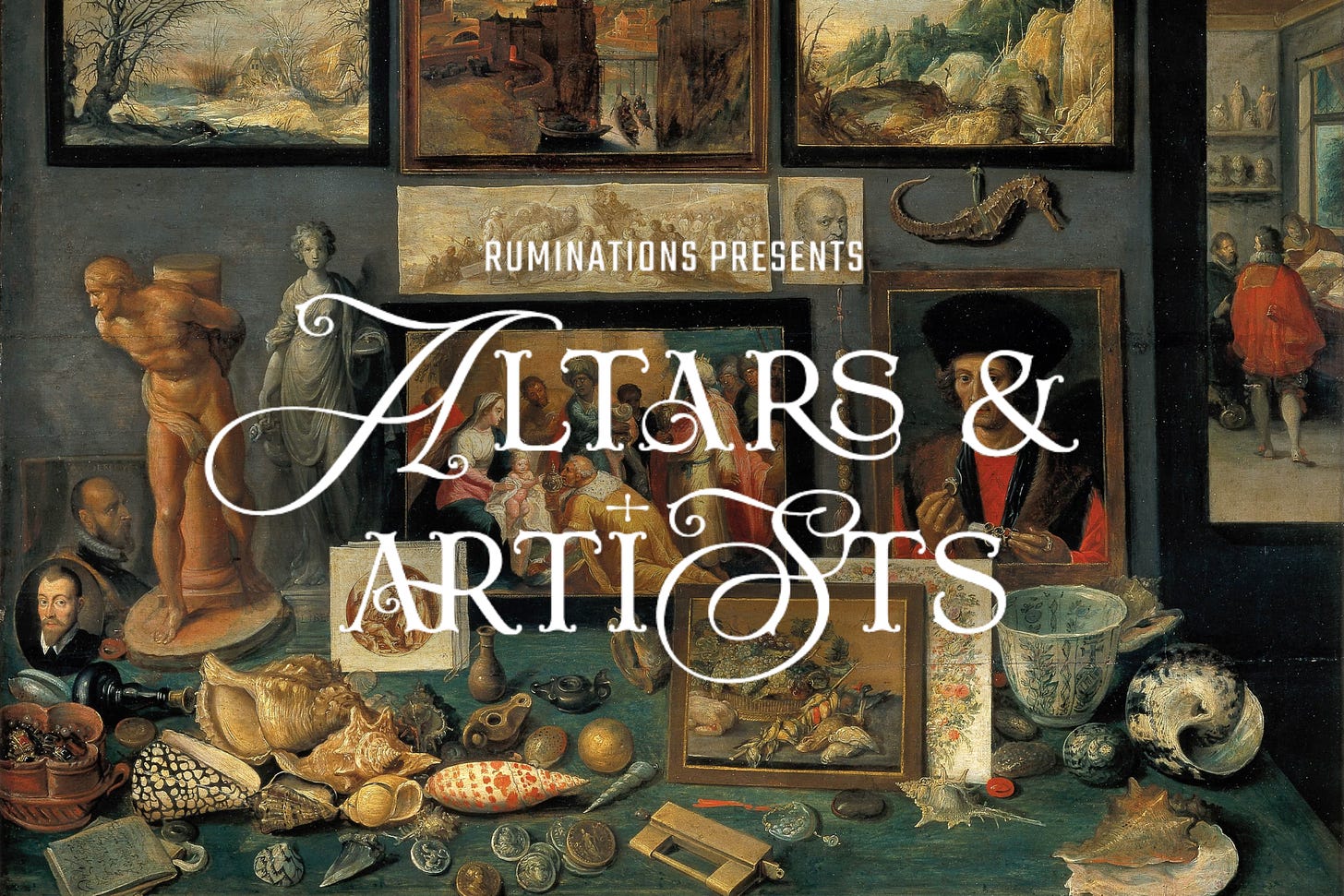
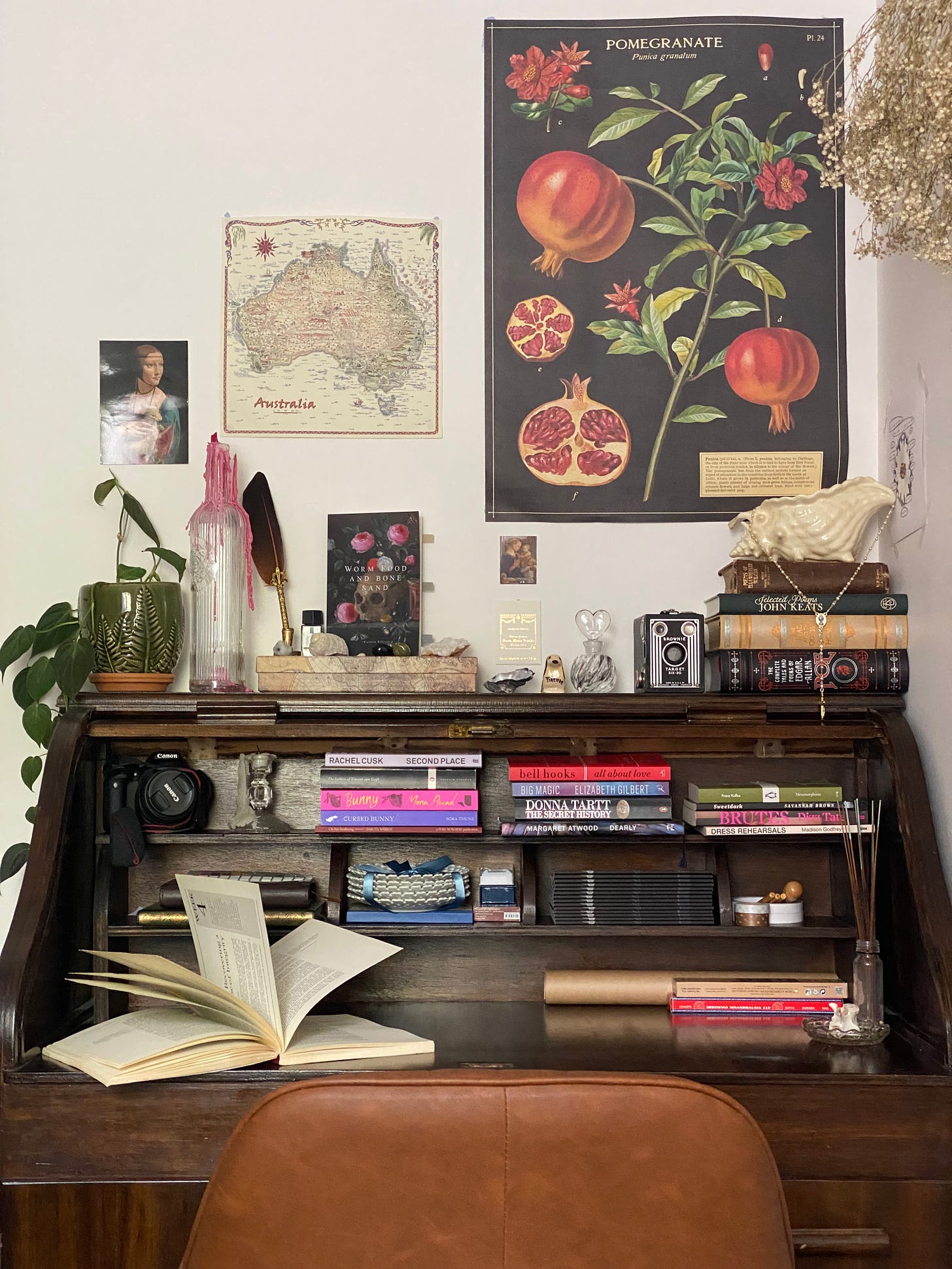
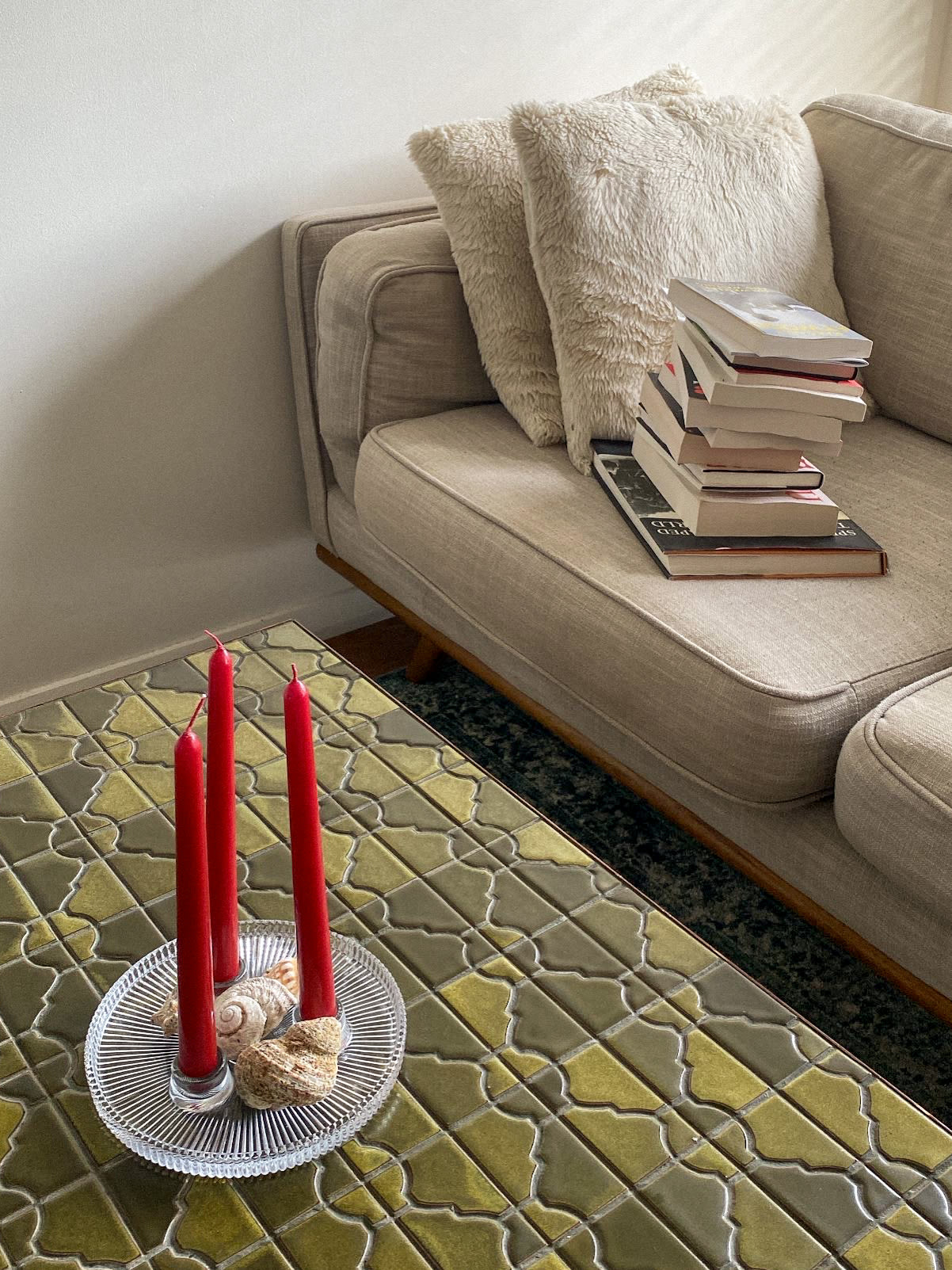
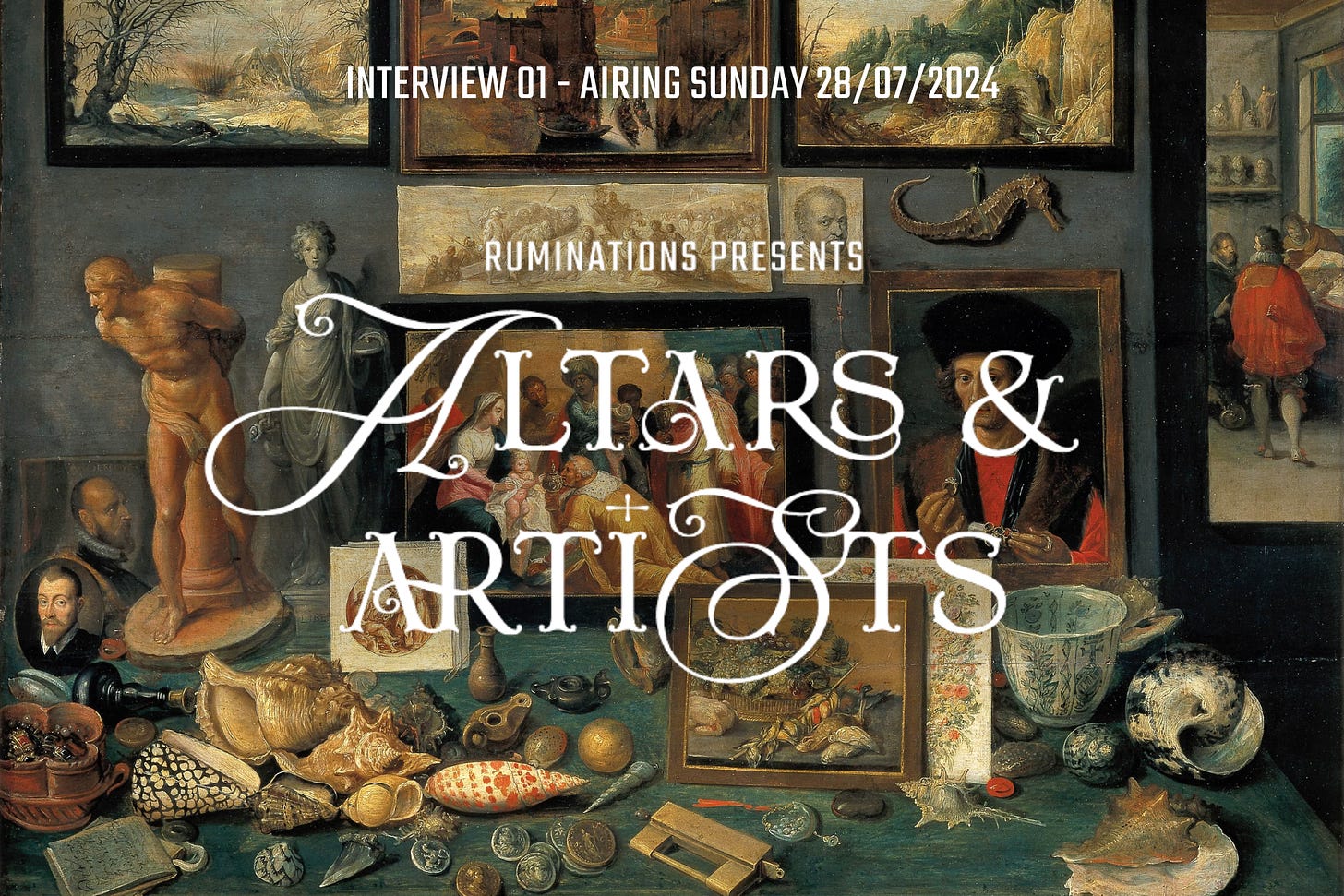
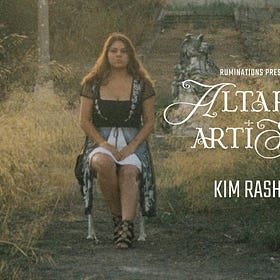
To note : How interior must one go? What if the 'accidental alter' (love that connotation by the by) is You?
"Susan Close considers the idea of the interiors of one’s space as a mise-en-scene"
I hone all too close to encircling the 'interior interior'... am I all too 'closed in'? Or, is it in this 'closed capacity' of my own form that encapsulates what I am expressing, or finding expression in?
As my writing and creating spaces are public spaces - particularly at home, I have no private mise-en-scene to call my own... all I write and create - and the process there in - is prone - always - to direct witness... so, this revelatory brings to awareness...
"I must hold to my own interior" Thus, the interior becomes my "Sacred Space" of creation - binding me to what creative process I would enact outworldy - flowing through me in-worldly.
I only have the landscape of my being to hold 'the private scenery' of my arts.
So so excited for this! I can’t imagine writing anywhere else but my studio and I love having a peek into the mental spaces of other artists :)